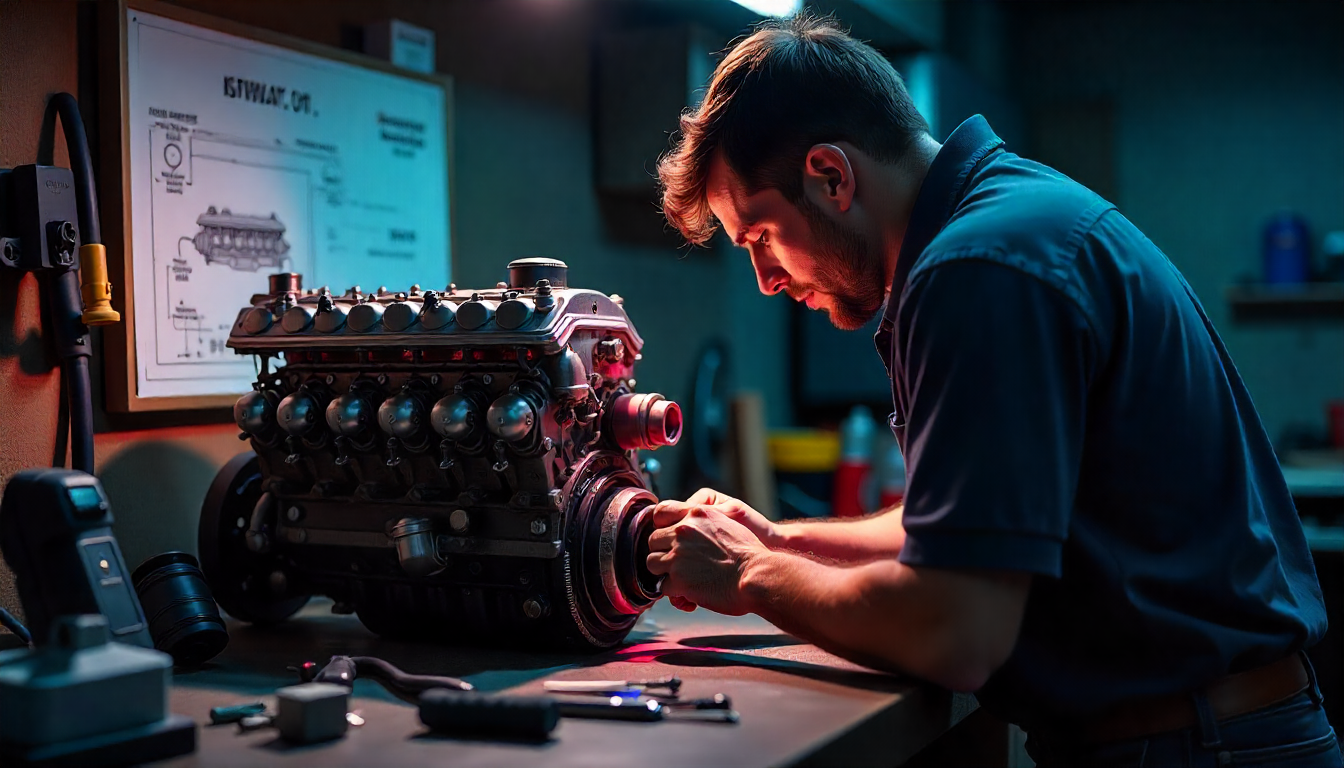Understanding the essentials of your boat’s power system is the first step toward safety and reliability. This inboard boat parts guide explains the key engine components, how they function, and the maintenance essentials needed to keep your vessel running smoothly. Whether you are a seasoned boater or exploring the boating business, knowing the basics of inboard motor parts helps extend the life of your investment.
Why an Inboard Boat Parts Guide Matters
An inboard boat depends on a carefully integrated propulsion system located inside the hull. Unlike outboards, inboard boat engines provide balance, durability, and fuel efficiency. For every boat owner, following a comprehensive guide on inboard motor parts ensures better performance and fewer costly repairs. Smooth operation is not achieved by chance—it comes from proper maintenance of each part, from spark plugs to the propeller shaft.
Main Components in Inboard Motor Parts
Engine Block in the Inboard Boat Parts Guide
The engine block is the heart of inboard motor parts. It houses the cylinders where combustion takes place and power is generated. This block transforms fuel into motion that pushes the boat forward. Regular maintenance of the engine block prevents overheating, corrosion, and cracks that could result in expensive downtime. For boat owners and those in the boating business, understanding the role of the engine block is essential.
Propeller Shaft and Propeller Connection
Among inboard motor parts, the propeller shaft plays a vital role by transferring energy from the engine block to the propeller. When properly aligned, the propeller shaft ensures smooth operation and consistent power. Misalignment or wear can reduce fuel efficiency and damage other motor parts. Every inboard boat parts guide recommends checking the propeller shaft during regular maintenance to prevent costly repairs.
Spark Plugs in Inboard Motor Parts
Spark plugs ignite the fuel-air mixture inside the engine block. Without reliable spark plugs, fuel efficiency suffers, and misfires can occur. Replacing spark plugs as part of regular maintenance improves performance and reduces the risk of engine damage. They are among the smallest yet most critical inboard motor parts, directly affecting smooth operation.
Maintenance Essentials for Inboard Motor Parts
Regular Maintenance Practices
A reliable inboard boat requires consistent care. This inboard boat parts guide emphasizes regular maintenance as the best way to keep the propulsion system in top condition:
- Inspect spark plugs regularly and replace when needed.
- Examine the propeller shaft for alignment issues.
- Check the engine block for cracks, overheating, or corrosion.
- Maintain proper oil and fuel system levels.
- Flush the cooling system after each boat day, especially in saltwater. ⚓
- Replace worn motor parts before they cause costly repairs.
Each step ensures that inboard motor parts continue to operate smoothly, protecting both safety and investment.
Fuel System and Fuel Efficiency
The fuel system is another essential part of inboard motor parts. Clean injectors, functional pumps, and unclogged filters guarantee consistent performance and fuel efficiency. A poorly maintained fuel system reduces efficiency, causes blockages, and harms the engine block. Following this guide by inspecting and servicing the fuel system protects the long-term reliability of inboard boat engines.
Inboard Engines and Marine Propulsion
Understanding Inboard Engines
Inboard engines are designed to provide strong propulsion for larger boats. Positioned inside the hull, they connect to the propeller shaft and propeller to move the boat forward. This design delivers smoother operation, better fuel efficiency, and durability. Inboard engines also offer a cleaner look compared to outboards, making them the choice for many boats in the boating business.
The Propulsion System in an Inboard Boat
The propulsion system combines inboard motor parts such as the engine block, spark plugs, fuel system, and propeller shaft. Each component must work together for the boat to move efficiently. When one part fails, the entire propulsion system suffers. Regular maintenance ensures balanced power delivery and protects against costly repairs.
Inboard Boat Parts Guide for Boat Owners
Preventing Corrosion and Overheating
Every inboard boat parts guide highlights the importance of preventing corrosion. Saltwater, fuel contamination, and lack of cooling system maintenance can shorten the lifespan of inboard motor parts. Boat owners must flush the cooling system, check hoses, and monitor the engine block to avoid overheating.
Proper Maintenance in the Boating Business
For those in the boating business, keeping inboard motor parts in excellent condition is more than just good practice—it is a business necessity. Customers expect smooth operation during yacht charters, boat rentals, and trips on boats near popular marinas. Investing in regular maintenance builds trust, attracts new customers, and helps operators process payments efficiently.
Benefits of Following the Inboard Boat Parts Guide
By applying the practices in this inboard boat parts guide, boat owners benefit in several ways:
- Extended lifespan of inboard motor parts
- Improved fuel efficiency and reliability
- Prevention of costly repairs
- Safer boating experiences
- Stronger resale value of boats
These benefits apply equally to private boat owners and those operating in the boating business.
Conclusion: Commitment to Maintenance
This inboard boat parts guide has outlined the essential inboard motor parts, from the engine block to the propeller shaft, and explained why spark plugs and the fuel system must not be ignored. Following regular maintenance practices ensures better performance, prevents corrosion, and protects investments in both boats and boating businesses. Whether you are exploring yacht charters, browsing boats for rentals, or simply enjoying your own boat day, understanding inboard motor parts makes any day a boat day worth remembering.


